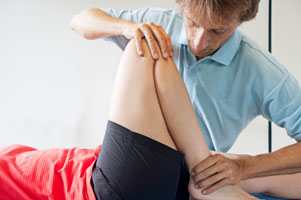By Elizabeth Magill
Dealing with an injury that requires rest–no matter for how long–can seem like an eternity. If you’re fitness-conscious as well, you’ll be concerned about staying in shape during your recovery. According to the International Association of Athletics Federations you can do it by focusing on strength, balance, flexibility, and endurance during your downtime.
Here are 10 tips to help you stay fit while recovering.
1. Start with R.I.C.E.
If your injury is sports-related, a sprain, strain, knee injury, fracture, dislocation, or an injury of the Achilles tendon, treatment should begin with the R.I.C.E. method, an acronym for rest, ice, compression and elevation. R.I.C.E helps to reduce swelling and relieve pain, especially during the early phase of the injury. The R.I.C.E. treatment also helps your injury heal faster, enabling you to get back to your previous fitness regime more quickly.
2. Communicate with your doctor
Whatever exercise you do, do it under your doctor’s supervision. Your physician will keep you apprised of what you’re ready for, and what you need to hold off on, so that you don’t re-injure yourself.
3. Listen to your body
In addition to listening to your doctor, listen to your body. It will let you know when you’re exercising too much or pushing too hard. Overdoing it can hinder your ability to stay in shape while recovering from an injury.
4. Work with a physical therapist
Your physician may recommend physical therapy to aid in your recovery. Most physical therapists use a combination of strength and stretching exercises to help patients heal. They’re important in both hastening recovery, as well as in reducing the chances of further injury. Physical therapists can also recommend at-the-office chair exercises, to help you stay in shape if your mobility is limited.
5. Wear recommended protection equipment
Some injuries may take only days to heal, but others may take weeks or months. It’s important to wear doctor-advised protective equipment, such as a brace, splint, tape, or compression bandage, for injury support and protection, while performing any kind of stretching, aerobics, or strengthening exercises.
6. Incorporate low-impact aerobics into your exercise plan.
Aerobic exercises support healing by increasing both blood flow, and nutrients, to the injured site. Low-impact aerobic exercises, such as bicycling, will get your heart pumping without jarring the rest of your body. As a bonus, the endorphins released during cardiovascular exercise will help lift your mood.
7. Get into the pool.
Swimming is an excellent way to stay in shape while recovering from injury. Swimming works your entire body, including your muscle strength, endurance, flexibility, and cardiovascular system. Thanks to your body’s buoyancy in water, there’s also a low risk for re-injury with swimming, since there’s less stress on your joints, bones, and connective tissue.
8. Utilize yoga.
Yoga is known to improve posture, breathing, balance, mood, and muscle strength. Because yoga improves flexibility, it can also help to prevent re-injury.
9. Eat healthy. Without your normal exercise regimen, your metabolism will slow down, so you’ll need less food to fuel your body. Eat healthy foods like fruits, vegetables, and lean proteins, so pounds don’t creep up while recovering from your injury.
10. Take it easy. Some injuries require rest, and nothing more. Don’t stress out about it if you can’t be physical. Use the muscles in your mind, while you’re waiting for your body to heal. Also, use this downtime to spend more quality time with your family, or to tackle an extra project at work.
If you keep in basic shape during your recovery, before you know it you’ll be back to your best level of fitness and strength.
